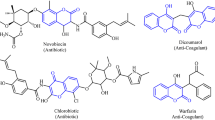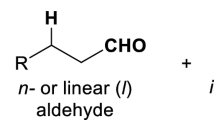Abstract
An economical and proficient approach has been developed for the synthesis of chromenopyrimidines via three-component reaction of thiobarbituric acid/barbituric acid, methylarenes and dimedone/1,3-cyclohexanedione by using lemon juice as a natural, biodegradable catalyst and TBHP as an oxidant. This transformation involves metal-free C–C bond formation via C–H activation of methylarenes under mild reaction conditions.
Graphical abstract






Similar content being viewed by others
References
Beccalli EM, Broggini G, Martinelli M, Sottocornola S (2007) C–C, C–O, C–N bond formation on sp 2 carbon by Pd (II)-catalyzed reactions involving oxidant agents. Chem Rev 107:5318–5365. https://doi.org/10.1021/cr068006f
Liu B, Wang W, Huang R, Yan J, Wu J, Xue W, Yang S, Jin Z, Chi YR (2017) Direct activation of β-sp3-carbons of saturated carboxylic esters as electrophilic carbons via oxidative carbene catalysis. Org Lett 20:260–263. https://doi.org/10.1021/acs.orglett.7b03650
Alberico D, Scott ME, Lautens M (2007) Aryl–aryl bond formation by transition-metal-catalyzed direct arylation. Chem Rev 107:174–238. https://doi.org/10.1021/cr0509760
Chen X, Engle KM, Wang DH, Yu JQ (2009) Palladium (II)-catalyzed C– H activation/C– C cross-coupling reactions: versatility and practicality. Angew Chem Int Ed 48:5094–5115. https://doi.org/10.1002/anie.200806273
Moselage M, Li J, Ackermann L (2015) Cobalt-catalyzed C–H activation. ACS Catal 6:498–525. https://doi.org/10.1021/acscatal.5b02344
Shang R, Ilies L, Nakamura E (2017) Iron-catalyzed C–H bond activation. Chem Rev 117:9086–9139. https://doi.org/10.1021/acs.chemrev.6b00772
Hudlicky M (1990) Oxidations in organic chemistry. American Chemical Society, Washington
Recupero F, Punta C (2007) Free radical functionalization of organic compounds catalyzed by N-hydroxyphthalimide. Chem Rev 107:3800–3842. https://doi.org/10.1021/cr040170k
Ishii Y, Sakaguchi S, Iwahama T (2001) Innovation of hydrocarbon oxidation with molecular oxygen and related reactions. Adv Synth Catal 343:393–427. https://doi.org/10.1002/1615-4169(200107)343:5%3C393:AID-ADSC393%3E3.0.CO;2-K
Guo Z, Liu B, Zhang Q, Deng W, Wang Y, Yang Y (2014) Recent advances in heterogeneous selective oxidation catalysis for sustainable chemistry. Chem Soc Rev 43:3480–3524. https://doi.org/10.1039/c3cs60282f
Romines KR, Freeman GA, Schaller LT, Cowan JR, Gonzales SS, Tidwell JH, Andrews CW, Stammers DK, Hazen RJ, Ferris RG (2006) Structure–activity relationship studies of novel benzophenones leading to the discovery of a potent, next generation HIV nonnucleoside reverse transcriptase inhibitor. J Med Chem 49:727–739. https://doi.org/10.1021/jm050670l
Masson PJ, Coup D, Millet J, Brown NL (1995) The effect of the β-D-xyloside naroparcil on circulating plasma glycosaminoglycans an explanation for its known antithrombotic activity in the rabbit. J Biol Chem 270:2662–2668. https://doi.org/10.1074/jbc.270.6.2662
Surburg H, Panten J (2016) Common fragrance and flavor materials: preparation, properties and uses. Wiley, New York
Pan J-F, Chen K (2001) A facile catalytic oxidation of activated hydrocarbons to the carbonyl functionality mediated by Mn(II) complexes. J Mol Catal A Chem 176:19–22. https://doi.org/10.1016/S1381-1169(01)00238-2
Rothenberg G, Wiener H, Sasson Y (1998) Pyridines as bifunctional co-catalysts in the CrO3-catalyzed oxygenation of olefins by t-butyl hydroperoxide. J Mol Catal A Chem 136:253–262. https://doi.org/10.1016/S1381-1169(98)00070-3
Nagano T, Kobayashi S (2008) Iron catalyst for oxidation in water: surfactant-type iron complex-catalyzed mild and efficient oxidation of aryl alkanes using aqueous TBHP as oxidant in water. Chem Lett 37:1042–1043. https://doi.org/10.1246/cl.2008.1042
Yi CS, Kwon K-H, Lee DW (2009) Aqueous phase C–H bond oxidation reaction of arylalkanes catalyzed by a water-soluble cationic Ru (III) complex [(pymox-Me2) 2RuCl2]+ BF4−. Org Lett 11:1567–1569. https://doi.org/10.1021/ol900097y
Lee NH, Lee C-S, Jung D-S (1998) Selective oxidation of benzylic hydrocarbons to carbonyl compounds catalyzed by Mn(III) salen complexes. Tetrahedron Lett 39:1385–1388. https://doi.org/10.1016/S0040-4039(98)00030-6
Bonvin Y, Callens E, Larrosa I, Henderson DA, Oldham J, Burton AJ, Barrett AG (2005) Bismuth-catalyzed benzylic oxidations with tert-butyl hydroperoxide. Org Lett 7:4549–4552. https://doi.org/10.1021/ol051765k
Jin C, Zhang L, Su W (2011) Direct benzylic oxidation with sodium hypochlorite using a new efficient catalytic system: TEMPO/Co (OAc) 2. Synlett 2011:1435–1438. https://doi.org/10.1055/s-0030-1260760
Li H, Li Z, Shi Z (2009) Gold-catalyzed benzylic oxidation to carbonyl compounds. Tetrahedron 65:1856–1858. https://doi.org/10.1016/j.tet.2008.12.055
Catino AJ, Nichols JM, Choi H, Gottipamula S, Doyle MP (2005) Benzylic oxidation catalyzed by dirhodium (II, III) caprolactamate. Org Lett 7:5167–5170. https://doi.org/10.1021/ol0520020
Sarma BB, Efremenko I, Neumann R (2015) Oxygenation of methylarenes to benzaldehyde derivatives by a polyoxometalate mediated electron transfer–oxygen transfer reaction in aqueous sulfuric acid. J Am Chem Soc 137:5916–5922. https://doi.org/10.1021/jacs.5b01745
Gaster E, Kozuch S, Pappo D (2017) Selective aerobic oxidation of methylarenes to benzaldehydes catalyzed by N-hydroxyphthalimide and cobalt (II) acetate in hexafluoropropan-2-ol. Angew Chem Int Ed 56:5912–5915. https://doi.org/10.1002/anie.201702511
Lumb JP (2017) Stopping aerobic oxidation in its tracks: chemoselective synthesis of benzaldehydes from methylarenes. Angew Chem Int Ed 56:9276–9277. https://doi.org/10.1002/anie.201704160
Veitch NC, Grayer RJ (2008) Flavonoids and their glycosides, including anthocyanins. Nat Prod Rep 25:555–611. https://doi.org/10.1039/b718040n
He F, Mu L, Yan G-L, Liang N-N, Pan Q-H, Wang J, Reeves MJ, Duan C-Q (2010) Biosynthesis of anthocyanins and their regulation in colored grapes. Molecules 15:9057–9091. https://doi.org/10.3390/molecules15129057
Mukai K, Okabe K, Hosose H (1989) Synthesis and stopped-flow investigation of antioxidant activity of tocopherols. Finding of new tocopherol derivatives having the highest antioxidant activity among phenolic antioxidants. J Org Chem 54:557–560. https://doi.org/10.1021/jo00264a011
Pratap R, Ram VJ (2014) Natural and synthetic chromenes, fused chromenes, and versatility of dihydrobenzo [h] chromenes in organic synthesis. Chem Rev 114:10476–10526. https://doi.org/10.1021/cr500075s
Nour AM, Khalid SA, Kaiser M, Brun R, Wai’l EA, Schmidt TJ (2010) The antiprotozoal activity of methylated flavonoids from Ageratum conyzoides L. J Ethnopharmacol 129:127–130. https://doi.org/10.1016/j.jep.2010.02.015
Keri RS, Budagumpi S, Pai RK, Balakrishna RG (2014) Chromones as a privileged scaffold in drug discovery: a review. Eur J Med Chem 78:340–374. https://doi.org/10.1016/j.ejmech.2014.03.047
Kaneshima T, Myoda T, Toeda K, Fujimori T, Nishizawa M (2017) Antimicrobial constituents of peel and seeds of camu-camu (Myrciaria dubia). Biosci Biotechnol Biochem 81:1461–1465. https://doi.org/10.1080/09168451.2017.1320517
Yin S-Q, Shi M, Kong T-T, Zhang C-M, Han K, Cao B, Zhang Z, Du X, Tang L-Q, Mao X (2013) Preparation of S14161 and its analogues and the discovery of 6-bromo-8-ethoxy-3-nitro-2H-chromene as a more potent antitumor agent in vitro. Bioorg Med Chem Lett 23:3314–3319. https://doi.org/10.1016/j.bmcl.2013.03.097
Rueping M, Sugiono E, Merino E (2008) Asymmetric organocatalysis: an efficient enantioselective access to benzopyranes and chromenes. Chem Eur J 14:6329–6332. https://doi.org/10.1002/chem.200800836
Shi Y, Zhou C-H (2011) Synthesis and evaluation of a class of new coumarin triazole derivatives as potential antimicrobial agents. Bioorg Med Chem Lett 21:956–960. https://doi.org/10.1016/j.bmcl.2010.12.059
Gourdeau H, Leblond L, Hamelin B, Desputeau C, Dong K, Kianicka I, Custeau D, Boudreau C, Geerts L, Cai S-X (2004) Antivascular and antitumor evaluation of 2-amino-4-(3-bromo-4, 5-dimethoxy-phenyl)-3-cyano-4H-chromenes, a novel series of anticancer agents. Mol Cancer Ther 3:1375–1384 PMID:15542776
Magar R, Thorat P, Jadhav V, Tekale S, Dake S, Patil B, Pawar R (2013) Silica gel supported polyamine: a versatile catalyst for one pot synthesis of 2-amino-4H-chromene derivatives. J Mol Catal A Chem 374:118–124. https://doi.org/10.1016/j.molcata.2013.03.022
Zghab I, Trimeche B, Mansour MB, Hassine M, Touboul D, Jannet HB (2017) Regiospecific synthesis, antibacterial and anticoagulant activities of novel isoxazoline chromene derivatives. Arab J Chem 10:S2651–S2658. https://doi.org/10.1016/j.arabjc.2013.10.008
Ghorbani-Vaghei R, Toghraei-Semiromi Z, Karimi-Nami R (2011) One-pot synthesis of 4H-chromene and Dihydropyrano [3, 2-c] chromene derivatives in hydroalcoholic media. J Braz Chem Soc 22:905–909. https://doi.org/10.1590/S0103-50532011000500013
Mobinikhaledi A, Foroughifar N, Mosleh T, Hamta A (2014) Synthesis of some novel chromenopyrimidine derivatives and evaluation of their biological activities. Iran J Pharm Res 13:873–879
Lagoja IM (2005) Pyrimidine as constituent of natural biologically active compounds. Chem Biodivers 2:1–50. https://doi.org/10.1002/cbdv.200490173
Achelle S, Plé N (2012) Pyrimidine ring as building block for the synthesis of functionalized π-conjugated materials. Curr Org Synth 9:163–187. https://doi.org/10.2174/157017912799829067
Deshmukh M, Patil SS, Jadhav S, Pawar P (2012) Green approach for Knoevenagel condensation of aromatic aldehydes with active methylene group. Synth Commun 42:1177–1183. https://doi.org/10.1080/00397911.2010.537423
Patil S, Jadhav S, Patil U (2012) Natural acid catalyzed synthesis of Schiff base under solvent-free condition: as a green approach. Arch Appl Sci Res 4:1074–1078
Pal R, Khasnobis S, Sarkar T (2013) First application of fruit juice of Citrus limon for facile and green synthesis of bis-and tris (indolyl) methanes in water. Chem J 3:7–12
Patil S, Jadhav SD, Deshmukh M (2011) Natural acid catalyzed multi-component reactions as a green approach. Arch Appl Sci Res 3:203–208
Ghahremanzadeh R, Fereshtehnejad F, Bazgir A (2010) Chromeno [2, 3-d] pyrimidine-triones synthesis by a three-component coupling reaction. Chem Pharm Bull 58:516–520. https://doi.org/10.1248/cpb.58.516
Kumar R, Raghuvanshi K, Verma RK, Singh MS (2010) Application of cyclic-1, 3-diketones in domino and multicomponent reactions: facile route to highly functionalized chromeno [2, 3-d] pyrimidinones and diazabenzo [b] fluorenones under solvent-free conditions. Tetrahedron Lett 51:5933–5936. https://doi.org/10.1016/j.tetlet.2010.09.017
Bhattacharjee D, Sutradhar D, Chandra AK, Myrboh B (2017) L-proline as an efficient asymmetric induction catalyst in the synthesis of chromeno [2, 3-d] pyrimidine-triones, xanthenes in water. Tetrahedron 73:3497–3504. https://doi.org/10.1016/j.tet.2017.05.025
Kumari S, Kumar D, Gajaganti S, Srivastava V, Singh S (2019) Sc (OTf) 3 catalysed multicomponent synthesis of chromeno [2, 3-d] pyrimidinetriones under solvent-free condition. Synth Commun 49:431–443. https://doi.org/10.1080/00397911.2018.1560471
Shrestha N, Shrestha S, Bhattarai A (2016) Determination of ascorbic acid in different citrus fruits of Kathmandu Valley. J Med Biol Sci Res (JMBSR) 2:9–14
Liu Y, Heying E, Tanumihardjo SA (2012) History, global distribution, and nutritional importance of citrus fruits. Compr Rev Food Sci Food Saf 11:530–545. https://doi.org/10.1111/j.1541-4337.2012.00201.x
Alikhani A, Foroughifar N, Pasdar H (2018) Lemon juice as a natural catalyse for synthesis of Shiff’s base: a green chemistry approach. Int J Adv Eng Res Sci (IJAERS) 5:61–65. https://doi.org/10.22161/ijaers.5.2.7
Acknowledgements
Authors are grateful to IIT (BHU) for financial assistance in the form of institute fellowship and CIFC, IIT (BHU) for instrumentation facilities.
Author information
Authors and Affiliations
Corresponding author
Ethics declarations
Conflict of interest
Authors declare no conflict of interest.
Additional information
Publisher's Note
Springer Nature remains neutral with regard to jurisdictional claims in published maps and institutional affiliations.
Electronic supplementary material
Below is the link to the electronic supplementary material.
Rights and permissions
About this article
Cite this article
Kumari, S., Singh, S. & Srivastava, V. Lemon juice catalyzed C–C bond formation via C–H activation of methylarene: a sustainable synthesis of chromenopyrimidines. Mol Divers 24, 717–725 (2020). https://doi.org/10.1007/s11030-019-09980-1
Received:
Accepted:
Published:
Issue Date:
DOI: https://doi.org/10.1007/s11030-019-09980-1




